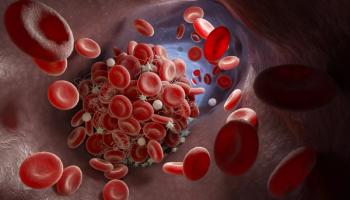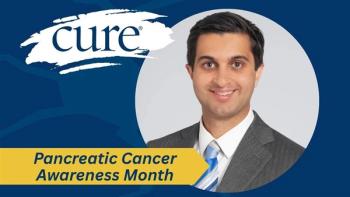
I Am Your Tax Dollars at Work
How does the government determine its return on investment for a human life?
You can run across countless examples of your tax dollars at work every day. The guys laying down or fixing the road? Your tax dollars at work.
Your children’s public school (and even private school, voucher-supported) teachers? Your tax dollars at work.
The county ag extension agent you call for advice? Your tax dollars at work.
This article you’re reading? Your tax dollars at work.
No, no. I don’t mean that I or this website is supported by your over-taxed, hard-earned money. I mean that, if not for those taxes, I probably wouldn’t be here today. I’d probably be dead.
I live in Chatham County, North Carolina. According to the NC Central Cancer Registry, in 2017 there will be roughly 59,000 new cases of cancer and almost 21,000 deaths from cancer state-wide. In Chatham County alone, there will be 588 new cases, and 224 of us will die. In a lifetime, four out of 10 of us in NC will get some form of cancer.
Now magnify that by 49 other states, some better and some worse than NC.
The good news is that nation-wide, survival trends are on an upswing. The Annual Report to the Nation on the Status of Cancer, 1975-2014, shows that the five-year survival rate for all types of cancer has improved significantly over the last 40 years. Given that a hundred years ago a diagnosis of cancer was pretty much fatal — and pretty much quickly fatal — the fact that so many of us are now surviving for at least five years is encouraging. I know I’m glad to be here!
What remains unclear to me is how many of us who have ever been diagnosed with cancer ultimately succumb to it — maybe not immediately, and maybe not within five years…but sooner than we otherwise would have died. I don’t think anyone knows the answer. We measure success against cancer in five-year increments, not lifetimes. And, against all reason, we consider just one incremental success a “cure.”
If lifetime “cure” is still a questionable achievement, shorter-term survival is certainly a step in the right direction — a step we have clearly made. What did we do to get there?
First, we learned more about some of the causes of cancer, such as the use of tobacco products, certain viruses, and obesity, and have mounted public health programs to address these things. Second, when cancer does occur, we’ve developed better ways to detect it earlier, when it is (hopefully) more amenable to treatment. And, of course, third, we’ve developed better treatments. The introduction of systemic chemotherapy in the 1960s and 1970s was a huge game changer. Today’s move toward more targeted treatments is changing the game once again both in terms of tolerability and efficacy.
The question is: At what cost?
None of this progress has come cheap. A great deal of it has come as a result of federal dollars awarded decade after decade to promising researchers in academic institutions all across this nation. As the years have gone by, the competition for those precious federal dollars has gotten stiffer and stiffer. It’s very possible that what might have been the next big breakthrough in the fight against cancer has had to be abandoned for lack of money.
Now the White House and its Congressional lackeys want to radically cut the funding for medical research — including research on cancer. Why? Is it because the research over the last 50 years has not borne fruit? Nope. That’s clearly not the case.
I can’t help but think that maybe it’s because the Powers That (currently) Be feel it has taken too many tax dollars to find the things that can save the lives of cancer patients — to save my life — and it’s time for that to end.
I am your federal medical research tax dollars at work. Without your tax dollars, I would certainly be dead right now.
What is my life worth? What is any life worth? When is it not in society’s best interest to try to cure disease and save lives?
Was I worth it? What do I have to do, who do I have to be, to repay society for the tax dollars it has invested in making it possible for me to be alive today? How do we measure the value of the federal government’s “return” on its investment in my life? Do we count the unpaid care services I provided to my daughter-in-law when she was sick and needed help? Do my unpaid services as a loving grandparent count for anything?
Or is this not enough — this unpaid work of being human? Does society measure whether it was worth it to save my life based solely upon my subsequent contributions as a laborer? Then did I repay my debt to society when I was instrumental in getting a long-stagnant idea for a new medical training program at the local university off the ground by writing a very convincing and lucrative grant proposal?
Or maybe, just maybe, my life was worth saving simply because I exist — without regard for what I have done, or not done, in the time since my diagnosis with a disease that should have killed me?
How many fathers, daughters, grandparents, cousins — how many do you know who are here today because their cancer treatment has kept them alive (at least, so far)? Was it worth it, to you, to have your federal tax dollars used to develop the treatments that have spared their lives?
How many mothers, sons, friends, brothers and sisters do you have right now who will not be alive, in the years to come, because progress in developing more effective cancer treatments was slowed to a snail’s pace by federal funding cuts?
How many people will you lose, in the years to come, because your elected representatives didn’t want to put your tax dollars to work on behalf of the people who matter to you? Because they didn’t think the return on the investment was worth it?
At least there’s one comforting thought, in all this: The dearth of effective new cancer treatments in the decades to come will hit the insured and the uninsured, the rich and the poor, equally. The rich won’t be able to buy their way out of this looming treatment dead end (pun intended), because you can’t buy what was never developed in the first place, no matter how much money you have.





